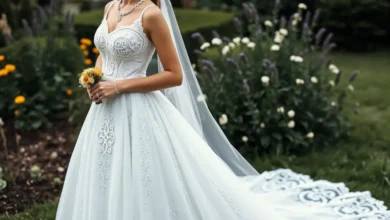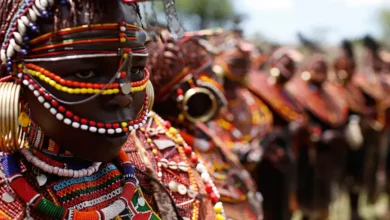A Journey Through the World of Wedding Dresses in India
Planning a wedding is an exciting, albeit sometimes overwhelming, experience. For many brides, the wedding dress is a central element. When it comes to wedding dresses India offers a breathtaking variety of options, each reflecting the country’s rich cultural heritage and regional diversity. This article will guide you through the fascinating world of Indian bridal attire, helping you understand the different styles, fabrics, and traditions associated with them.
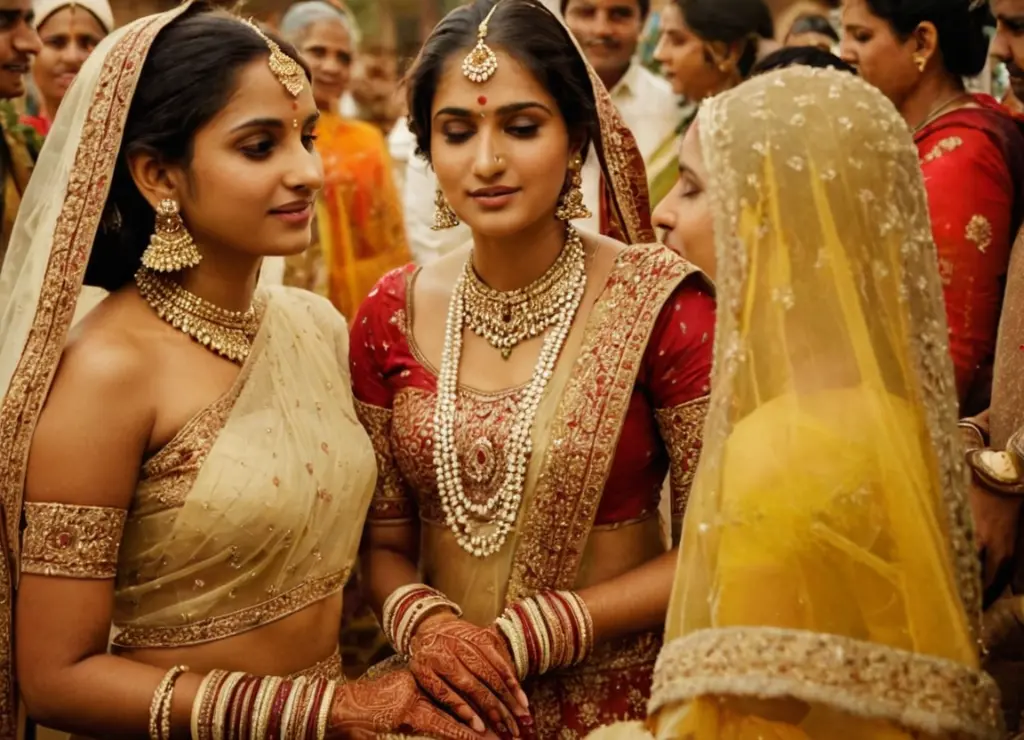
Understanding the Significance of Wedding Dresses in India
In India, the wedding dress is more than just a beautiful garment; it’s a symbol of tradition, family pride, and new beginnings. The colors, fabrics, and embroidery often carry significant meaning, reflecting the bride’s family history and regional customs. Unlike Western wedding dresses which are traditionally white, Indian bridal attire is vibrant and colorful, symbolizing prosperity, joy, and new life. The selection process is deeply personal, involving family members and often reflecting their preferences and beliefs.
The Cultural Tapestry: Region-Specific Styles
India’s vast geography and diverse cultures mean that wedding dress styles vary significantly from one region to another. Let’s explore some of the most prominent regional styles:
- Lehengas (North India):Perhaps the most iconic style of Indian bridal wear, the lehenga consists of a long, embroidered skirt, a fitted blouse (choli), and a dupatta (scarf). Lehengas are known for their intricate detailing, with heavy embroidery, sequins, and beadwork. The fabrics used are often rich and luxurious, such as silk, velvet, and brocade.
- Sarees (South India & Parts of East India):The saree is a timeless and elegant choice for many Indian brides, particularly in the southern and eastern parts of India. Bridal sarees are typically made from luxurious fabrics like silk (Kanjeevaram, Banarasi), and are adorned with intricate gold or silver threadwork (zari). The color of the saree, like red, is often chosen for its auspiciousness.
- Shararas (Muslim Weddings):The sharara is a traditional outfit consisting of wide-legged, flared pants, a short or long tunic (kurti), and a dupatta. Often paired with intricate embroidery and embellishments, this is a very elegant and modest choice for many Muslim brides.
- Ghararas (Muslim Weddings):Similar to shararas, ghararas are a traditional choice, known for their fitted pants which flare out dramatically at or below the knee. They are often adorned with elaborate embroidery and beadwork.
- Other Regional Variations:Beyond these major styles, there are numerous other regional variations, such as the Mekhela Chador in Assam, the Panetar and Gharchola in Gujarat, and variations in color and design across states. Each reflects the local traditions and tastes. The wedding dresses India offers are truly a reflection of its diverse cultural landscape.
Key Elements of Indian Bridal Attire
Regardless of the specific style, certain elements are consistently found in Indian bridal attire. Understanding these key components can help you appreciate the intricacies of these beautiful garments.
See also Maasai Weddings Decoded: The Secret Language of Red and Beads
Maasai Weddings Decoded: The Secret Language of Red and Beads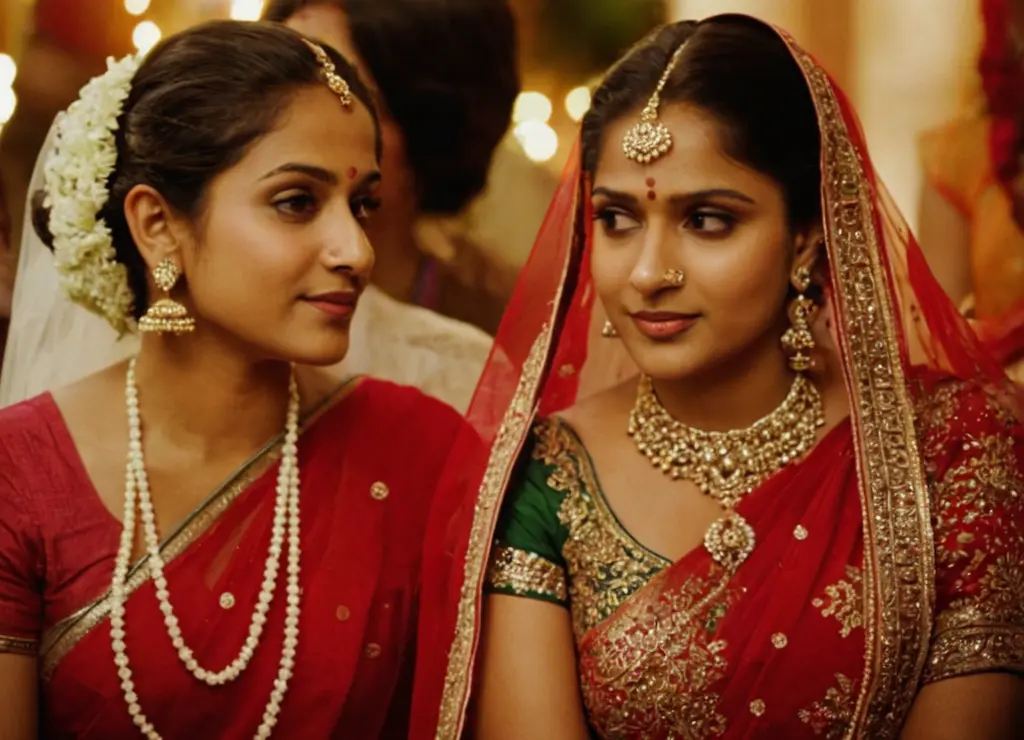
Fabrics: The Foundation of Luxury
The choice of fabric is crucial in creating a luxurious and elegant look. Common fabrics used in wedding dresses India include:
- Silk: A classic choice, silk is known for its luxurious texture, sheen, and durability. Different types of silk, such as Kanjeevaram silk, Banarasi silk, and raw silk, are used based on regional preferences.
- Velvet: Often used for heavier, more opulent designs, velvet adds a touch of richness and is popular for winter weddings.
- Brocade: Characterized by its woven patterns, brocade is a traditional choice that can add a regal touch to bridal attire.
- Georgette & Chiffon: These lightweight fabrics are often used for dupattas or for creating flowing, ethereal silhouettes.
Colors: Symbolism and Tradition
Colors in Indian weddings carry profound symbolism. While red is the most traditional color, symbolizing passion, fertility, and new beginnings, other colors are gaining popularity.
- Red: Traditionally the most favored color for wedding attire, it’s considered extremely auspicious.
- Gold: Often used in combination with red or other colors, gold symbolizes prosperity and purity.
- Maroon: A darker shade of red, it’s a rich and sophisticated option.
- Pink: Soft and romantic, pink is becoming a popular alternative to red.
- Orange/Saffron: These are seen as auspicious and sacred colors associated with spirituality and enlightenment.
- Other colors: Brides may also choose from a range of jewel tones like green, blue, and purple, often customized to match their personal preferences or family traditions.
The color choice often depends on regional customs, family preferences, and the bride’s personal style. Remember the colors of wedding dresses India are not just aesthetics but convey deeper cultural meanings.
Embroidery and Embellishments: The Art of Detail
Indian bridal wear is renowned for its intricate embroidery and embellishments, which can include:
See also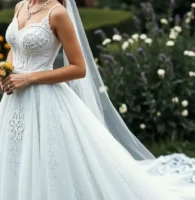 Celtic Wedding Gowns: A Guide to Timeless Elegance
Celtic Wedding Gowns: A Guide to Timeless Elegance- Zari: The use of gold or silver thread to create elaborate designs is a hallmark of Indian textiles.
- Zardozi: A type of metal embroidery that uses gold or silver threads, often combined with beads and sequins.
- Gota Patti: Appliqué work using ribbons of gold or silver fabric, often seen in Rajasthani bridal wear.
- Sequins & Beadwork: Used extensively to add sparkle and dimension to the garments.
- Mirror Work: Small mirrors are often embroidered onto the fabric for a vibrant, reflective effect.
The type of embroidery and embellishments chosen can significantly influence the overall look and feel of the bridal attire.
Dupatta: The Veil of Grace
The dupatta, a long scarf or veil, is an essential part of Indian bridal wear. It can be worn in various ways, draped over the head, shoulders, or arms. Often made from delicate fabrics like georgette or chiffon, it’s adorned with embroidery and embellishments to complement the main garment.
The Modern Indian Bride: Blending Tradition with Trends
While tradition remains essential, many modern Indian brides are also looking to incorporate contemporary styles and trends into their wedding attire. This can involve:
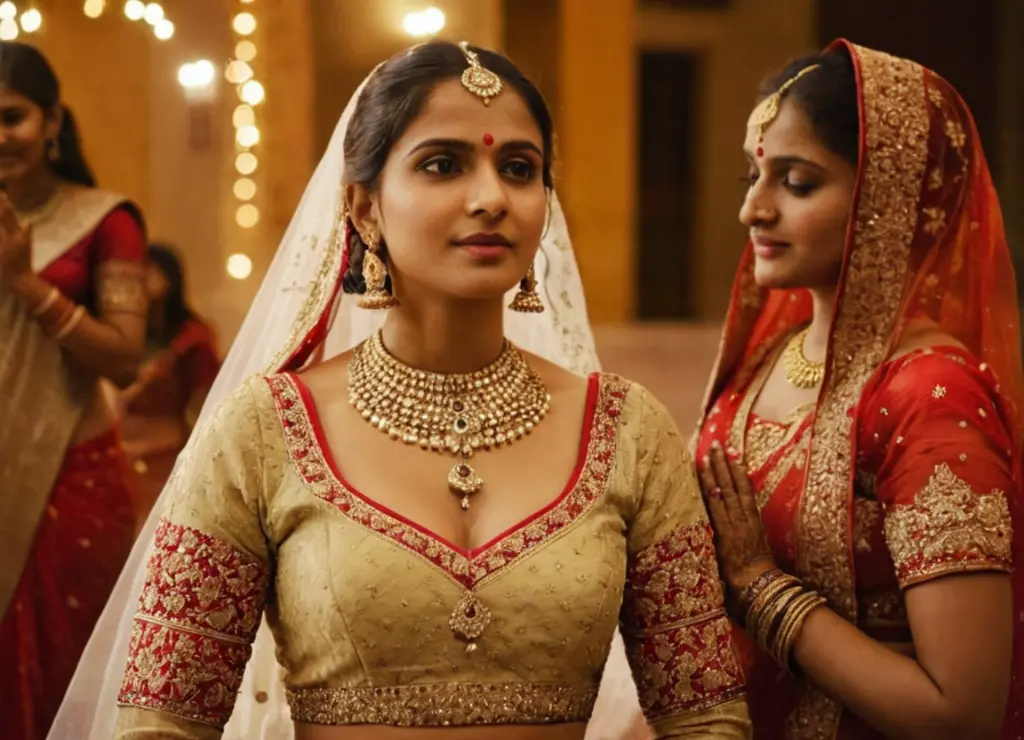
- Fusion Designs: Combining elements of traditional Indian wear with Western silhouettes, such as gown-style lehengas.
- Pastel Colors: Choosing softer pastel shades over traditional bright colors.
- Minimalist Designs: Opting for lighter embroidery and simpler silhouettes.
- Personalized Touches: Adding customized details, such as family motifs or special dates, to their wedding attire.
- Sustainable Options: More brides are becoming conscious about the impact of their choices and are exploring eco-friendly fabrics, recycled materials, and ethical brands.
The modern Indian bride seeks a balance between honoring her heritage and expressing her individual style. The world of wedding dresses India offers ample opportunities for this creative fusion.
Finding Your Perfect Wedding Dress in India
Selecting the perfect wedding dress can be a delightful experience when approached with the right preparation. Here are some tips to guide you:
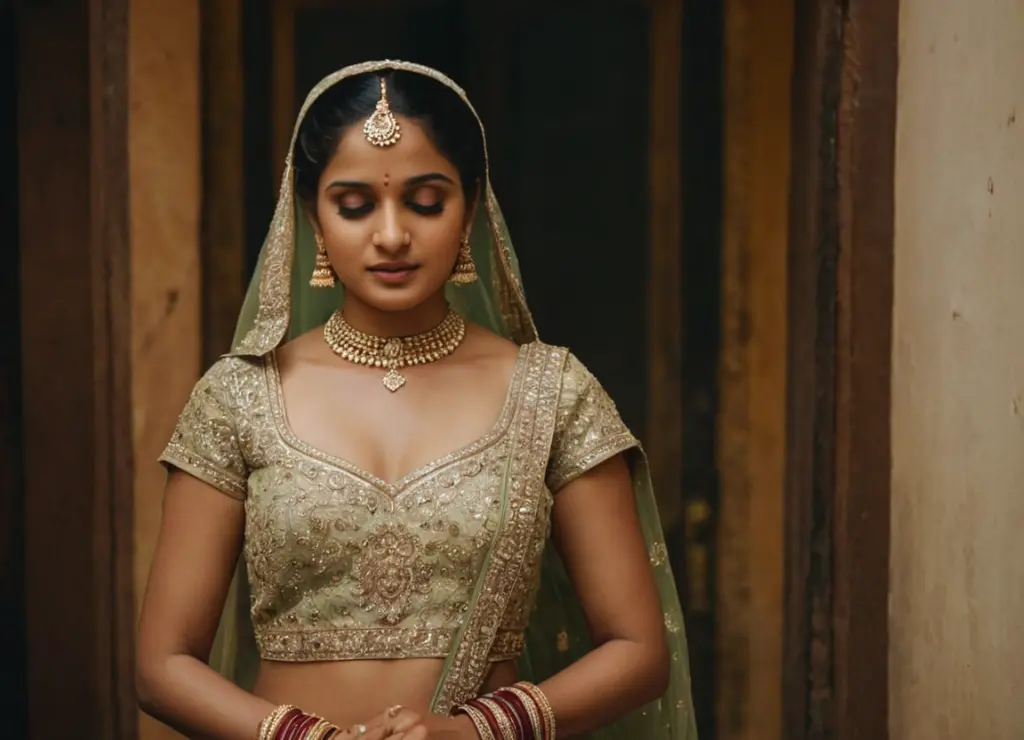
Planning and Preparation
- Research and Inspiration: Explore various styles, fabrics, and colors to get a sense of what you like. Look at bridal magazines, online platforms, and real wedding photos for inspiration.
- Budgeting: Determine your budget beforehand to narrow down your choices. Be realistic about the costs of different fabrics and embroidery styles.
- Timeline: Begin your search well in advance. Indian bridal wear often requires customization, which can take time.
- Family Preferences: Discuss your options with your family, as they may have specific preferences or traditions that you need to consider.
Shopping Tips
- Visit Reputable Stores/Designers: Choose well-known boutiques, designers, or stores with a good reputation for quality and craftsmanship.
- Try On Different Styles: Even if you have a specific style in mind, try on different silhouettes and colors to see what suits your body type and complexion.
- Consider the Season and Venue: Choose fabrics and designs that are appropriate for the season and wedding venue. Heavier fabrics might not be ideal for summer weddings, while lightweight fabrics are suitable for warmer weather.
- Pay Attention to Details: Carefully examine the embroidery, embellishments, and stitching quality.
- Customization: Don’t be afraid to customize your bridal attire. You can often make adjustments to the design, colors, and embroidery to create a truly unique look.
Online Options vs. In-Person Shopping
With the rise of online retail, brides now have the option of purchasing their wedding attire online. While convenient, it is crucial to be cautious when choosing this option:
- In-Person Shopping: Provides the advantage of touching and feeling the fabric, seeing the colors and designs in person, and getting expert advice from designers or sales representatives. It allows for more personalized adjustments and alterations.
- Online Shopping: Offers convenience and a wider range of choices but can be risky regarding the actual product quality and fit. It is essential to research well-known and reputable online retailers and carefully review the return and exchange policies.
In conclusion, while both have benefits, in-person shopping is recommended for those who prioritize quality and customization, while online shopping can work if you have found a reputable seller with a good return policy, and you are already familiar with the design you are purchasing.
Preserving Your Wedding Dress: A Lasting Memory
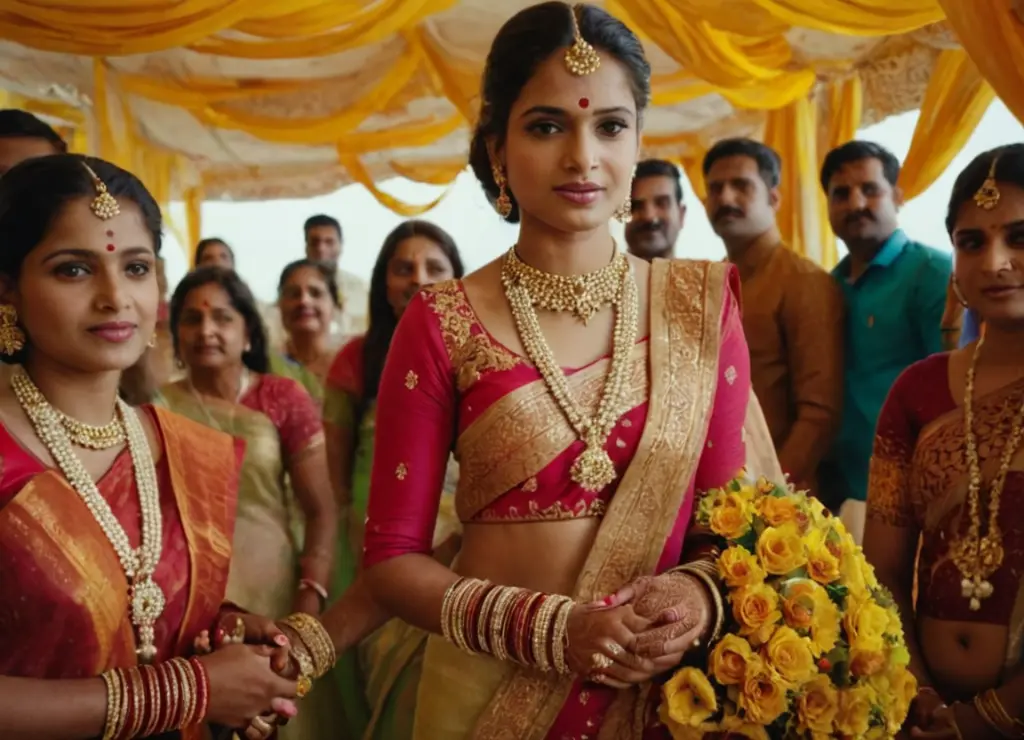
Your wedding dress is more than just a garment; it’s a cherished keepsake that holds special memories. Here are some tips for preserving your precious wedding dresses India has offered you:
- Professional Cleaning: Have your dress professionally cleaned soon after the wedding to prevent stains from setting in. Choose a cleaner specializing in bridal wear, as they will be familiar with delicate fabrics and embellishments.
- Proper Storage: Store your dress in a garment bag made from breathable fabric like muslin or cotton. Avoid plastic bags, which can trap moisture and cause yellowing. Store the dress in a cool, dry place away from direct sunlight or excessive humidity.
- Handling with Care: When handling your dress, make sure your hands are clean, and try to avoid touching the embroidery or delicate embellishments unnecessarily.
By taking good care of your wedding dress, you can ensure it remains a beautiful reminder of your special day for years to come.
Final Thoughts
The world of wedding dresses India presents is a magnificent tapestry of tradition, culture, and artistry. From the rich silks of the South to the intricate embroidery of the North, each style tells a unique story. By understanding the different styles, fabrics, and traditions, you can navigate the selection process with confidence and choose a bridal attire that truly reflects your personality and heritage.
Embrace the journey and find the dress that makes you feel beautiful and confident on your special day. Remember, the most important aspect of any wedding dress is how it makes you feel – radiant, joyful, and ready to start your new chapter.

